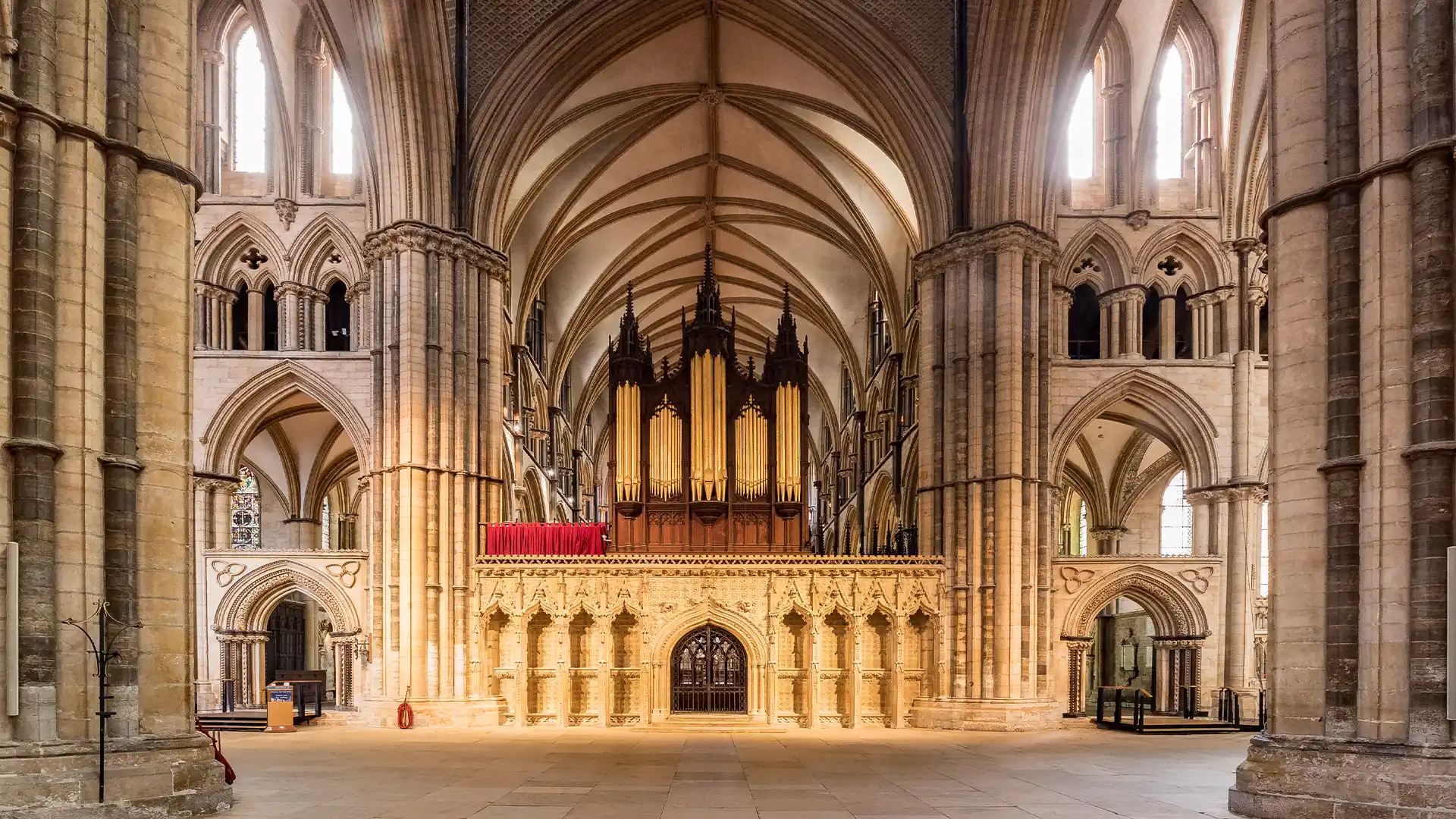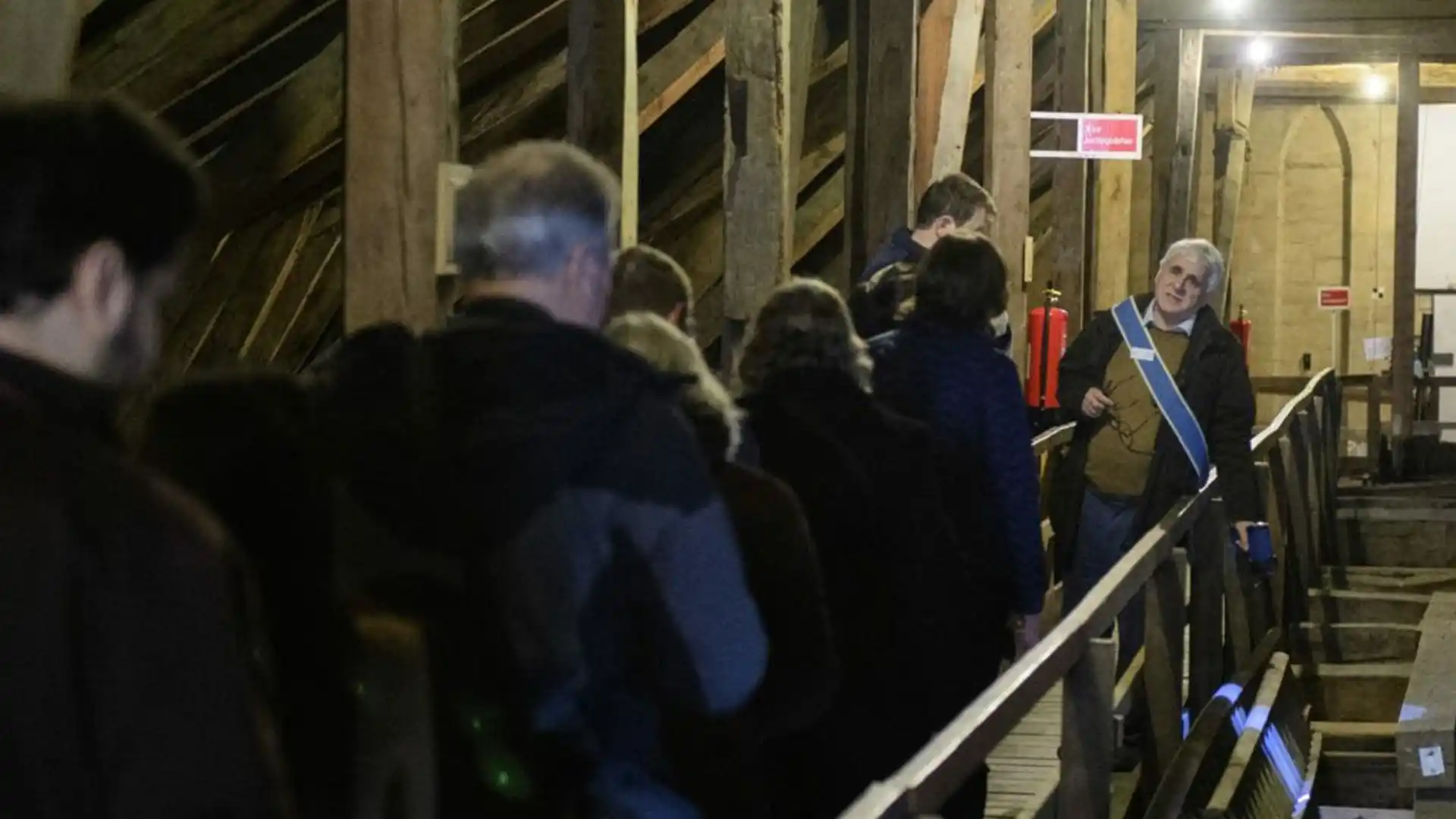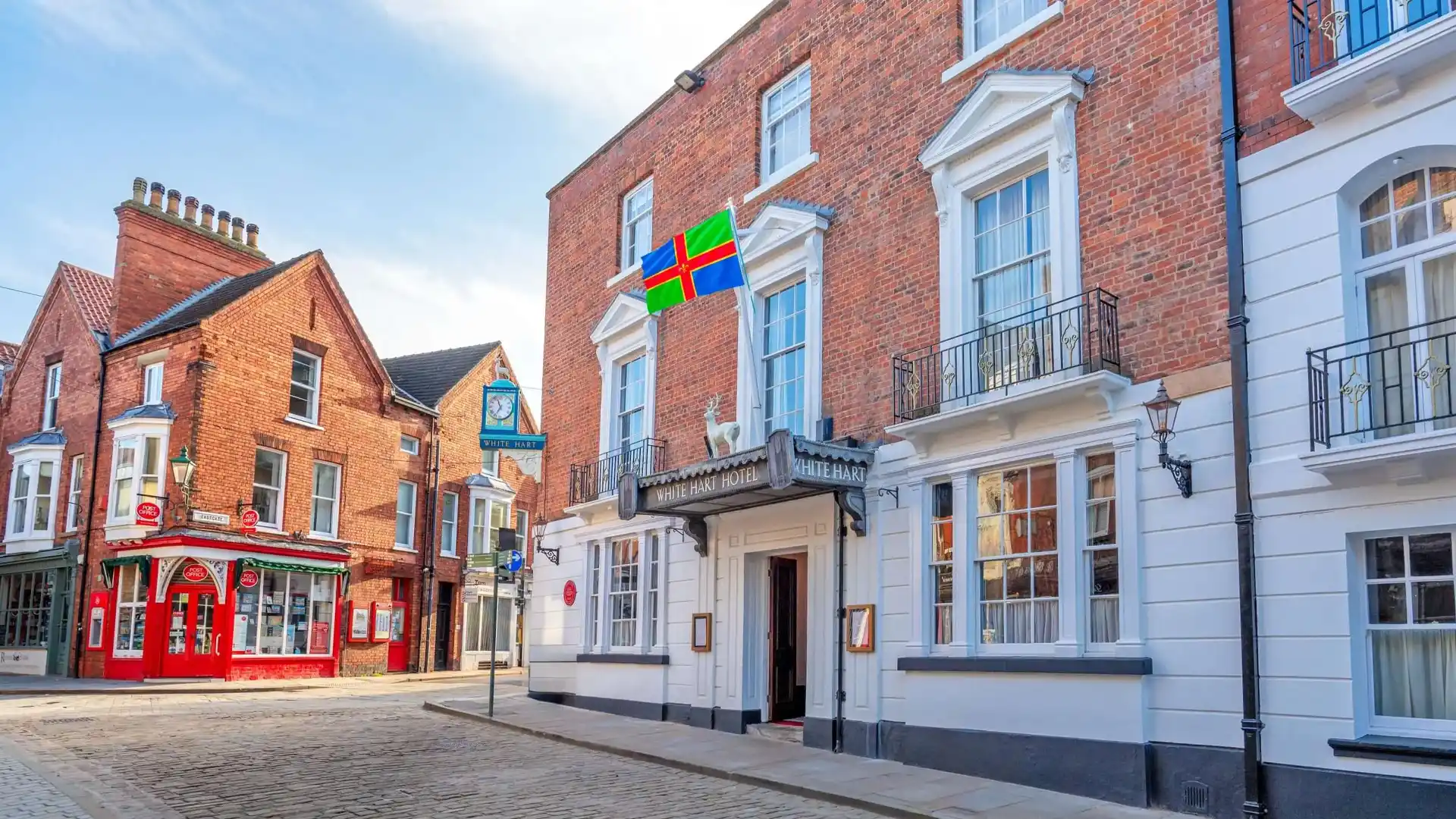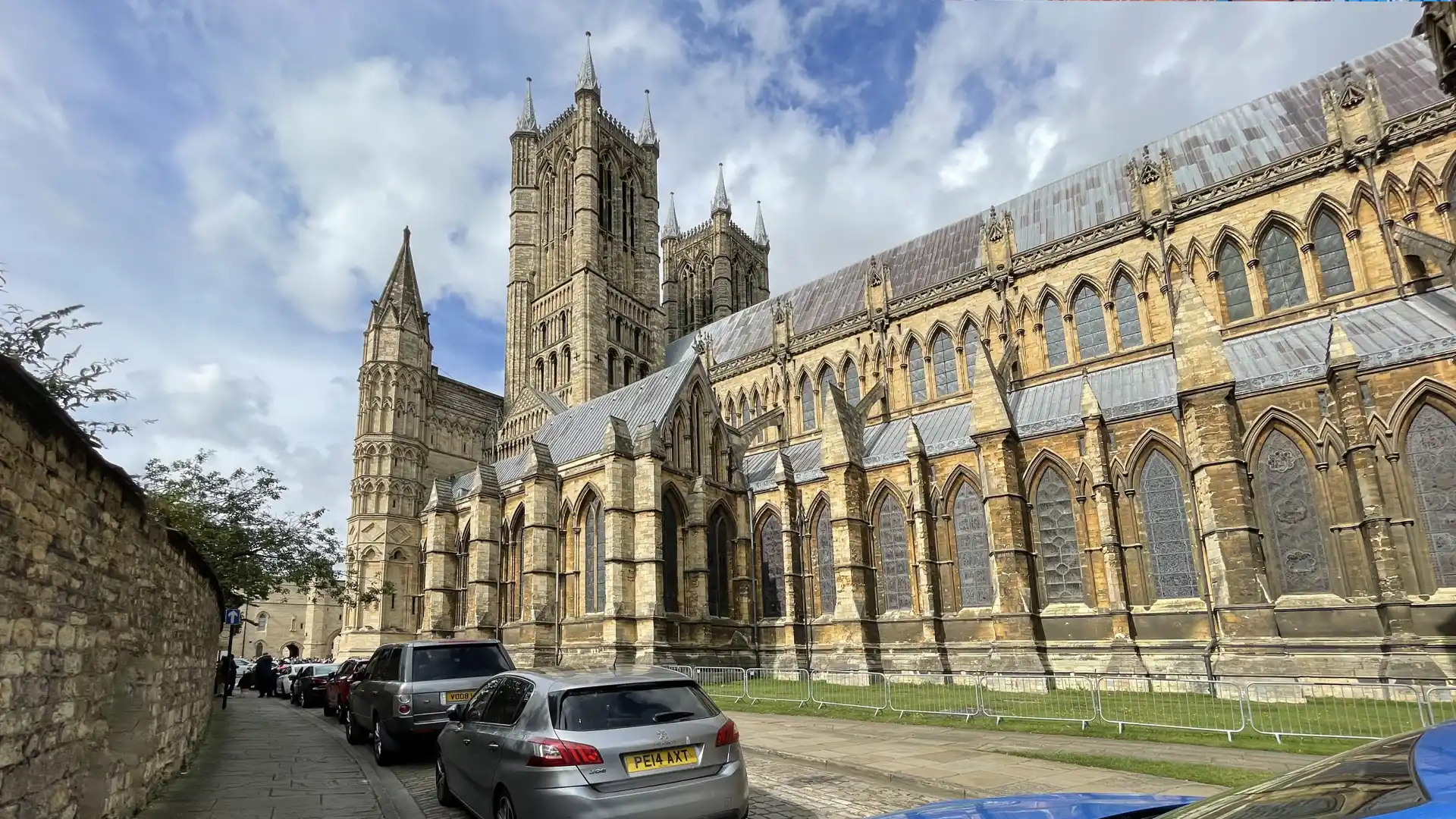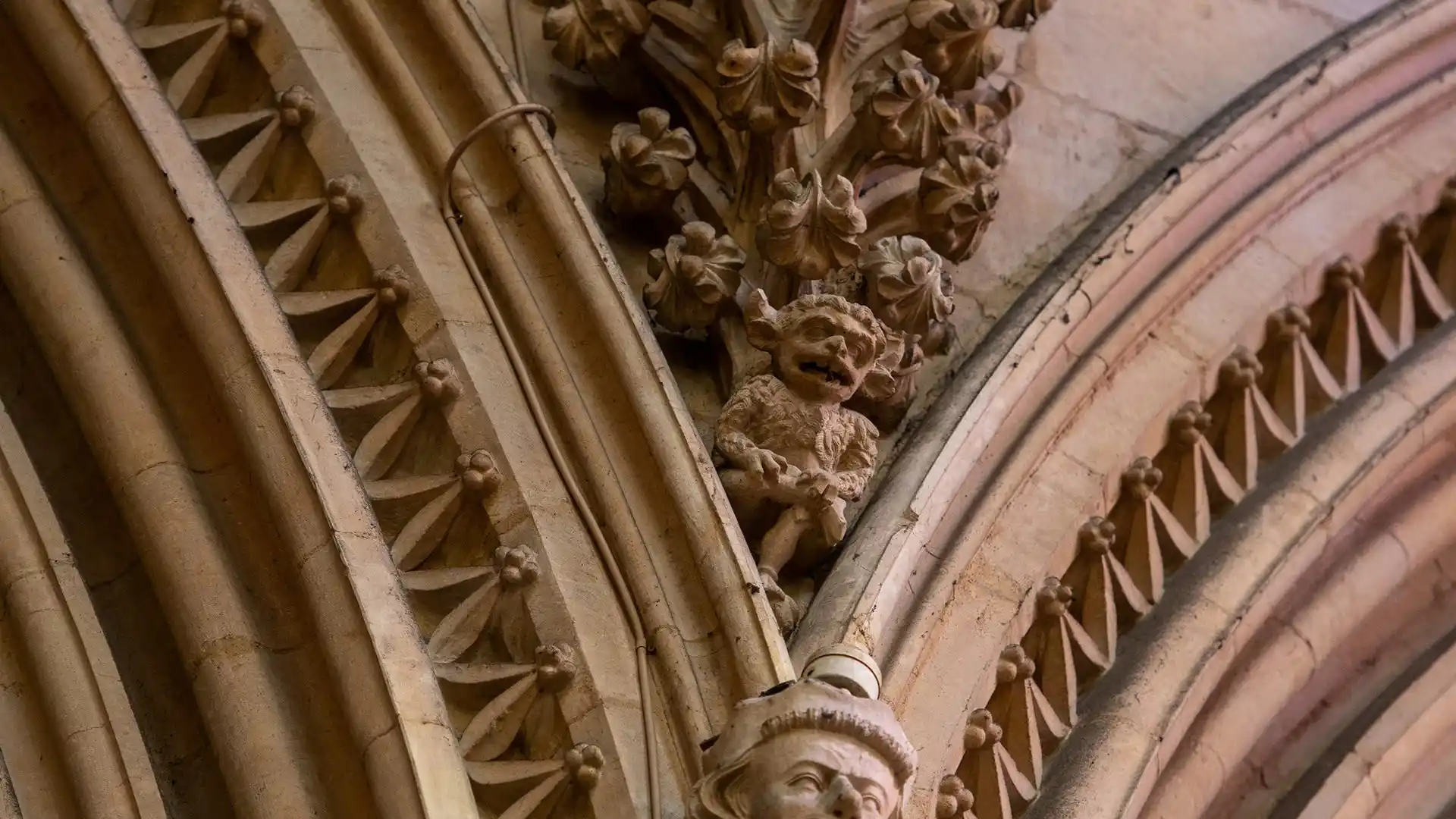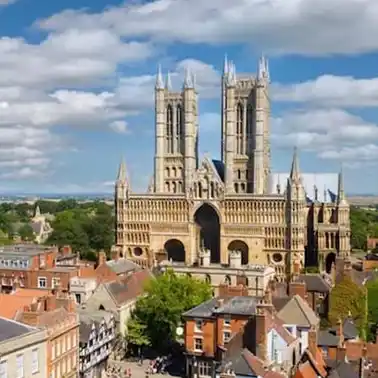Lincoln Cathedral has been a centrepiece of English history for almost a millennium.
Built after the Norman conquest, Lincoln Cathedral is now a world-renowned Gothic masterpiece. Over the centuries, it has seen wars, natural disasters, and significant religious changes.
Here’s a look at the timeline of Lincoln Cathedral’s remarkable history.
NOTE: We’d like to say a special ‘Thank You’ to the team at Lincoln Cathedral who fact-checked this article for us.
1072 – William the Conqueror Orders the Building of Lincoln Cathedral
Lincoln Cathedral’s story begins in 1072 under the command of William the Conqueror. After winning the Battle of Hastings in 1066, he wanted to strengthen his control over England. He did this by building a series of castles and cathedrals.
He chose Lincoln as the site for one of the country’s largest cathedrals and tasked Bishop Remigius with overseeing construction. It took 20 years to build Lincoln Cathedral.
The original cathedral was built in the Romanesque style, known for its rounded arches and massive proportions. While this first version of the cathedral was impressive, it was far from the Gothic masterpiece we see today.
1092 – The Consecration of Lincoln Cathedral
It took 20 years to build Lincoln Cathedral and its consecration took place in 1092, marking its completion.
Bishop Remigius passed away just two days before the consecration, so he didn’t live to see the cathedral’s completion. Despite this, the consecration was a monumental occasion, solidifying the cathedral’s importance as a spiritual and architectural landmark in England.
1141 (or 1124) – The Great Fire
In 1141 (or according to historian Peter Kidson, 1124), a devastating fire tore through the Cathedral a few years after completion. The damage was extensive, and much of the original structure was lost.
However, the resilience of the city and its people led to immediate efforts to rebuild.
1185 – The Earthquake and Destruction
Another catastrophe struck in 1185. This time, an earthquake destroyed much of the cathedral, leaving it in ruins.
Earthquakes are unusual for England. However, its impact was big enough to collapse most of the cathedral’s structures. This meant yet another major rebuild.
1186 – St. Hugh and the Gothic Transformation
In 1186, Hugh of Avalon was appointed as Bishop of Lincoln.
After the earthquake in 1185, Hugh led the efforts to rebuild Lincoln Cathedral. Under his guidance, the cathedral embraced the Gothic architectural style, with soaring pointed arches, ribbed vaults, and flying buttresses. These features still define the cathedral today.
Bishop Hugh laid the foundation for the stunning St Hugh’s Choir. This is one of the finest examples of Early Gothic architecture.
Bishop Hugh died in 1200. After his canonisation in 1220, he became St Hugh of Lincoln.
1237 – The Central Tower Collapses
In 1237, Lincoln Cathedral’s central tower collapsed.
The original tower, built during the early phases of the cathedral’s construction, had stood for several decades before its collapse. The exact cause is unknown, but it’s believed that structural weaknesses, possibly due to the immense weight of the stone tower and inadequate support, caused it to collapse.
The tower’s reconstruction made it more stable but also further solidified Lincoln Cathedral’s standing as a masterpiece of Gothic architecture. The reconstruction was complete by the mid-13th century.
1270’s – The Legend of the Lincoln Imp
During the 13th century, construction and decoration continued.
One of the most famous symbols of Lincoln Cathedral came into being—the Lincoln Imp. According to local legend, an angel turned the imp to stone by for causing havoc in the cathedral.
You can see the Lincoln Imp perched high within the cathedral today.
1311 – The Tallest Building in the World
By 1311, Lincoln Cathedral’s central spire was crowned with the addition of its central spire.
Standing at 160 meters (525 feet), it became the tallest building in the world. Taller than the Great Pyramid of Giza. This incredible feat of medieval engineering made Lincoln Cathedral famous across Europe.
The cathedral remained the tallest building in the world for 238 years. Unfortunately, the spire collapsed in 1548 and was never rebuilt.
1536–1549 – The English Reformation
The English Reformation in the 16th century brought major changes to the cathedral.
In 1549, Lincoln Cathedral, like many others in England, transitioned from Roman Catholicism to the Church of England.
As the Protestant movement grew, they removed religious iconography and Catholic elements.
1642-1651 – Oliver Cromwell and the English Civil War
Oliver Cromwell’s men damaged Lincoln Cathedral during the English Civil War.
Cromwell and his Puritan supporters opposed the ornate decorations found in Anglican churches, including Lincoln Cathedral. They believed in a simpler form of worship and saw the ornate design as excessive.
In 1643, after the Parliamentarian forces took Lincoln from the Royalists, they used the cathedral as a base. Soldiers turned parts of the cathedral into stables and caused serious damage. Driven by Puritan beliefs, they destroyed religious items, stained glass windows, and statues.
Cromwell didn’t personally damage the cathedral. But the actions of his troops under his leadership did. The cathedral needed major restoration after the war.
18th–19th Century – Restoration and Preservation
The damage from centuries of conflict led to a major restoration effort in the 18th and 19th centuries.
The famous architect George Gilbert Scott played a huge role in restoring the cathedral. He preserved the medieval elements of the cathedral while making it structurally sound for future generations.
Restorations included:
- 1674 – The building of the Wren Library
- 1761 – The redesign of the Chapter House roof as the original was badly decayed
- 1807 – The removal of the West Tower spires as they were structurally unsafe
- 1834 – The ‘Great Tom‘ bell lifted into the central tower
- 1880 – The addition of two more bells in the central tower
- 1898 – The installation of the Father Willis Organ
One of the most significant restorations during this period was the repair of the stunning Rose Window. This is an intricate circular window that had suffered damage over the years.
20th Century – Surviving Two World Wars
Lincoln Cathedral continued to stand as a beacon of hope during both World Wars.
While it wasn’t directly hit during bombing raids, the city of Lincoln suffered significant damage. The cathedral’s resilience during these times added to its symbolism as a place of peace and endurance.
Today – A Living Cathedral
Today, Lincoln Cathedral remains an icon of Gothic architecture and a symbol of faith.
It remains a place of worship, a centre for the local community, and a major tourist attraction. Visitors from all over the world come to see its breathtaking architecture. They admire the vibrant stained-glass windows and explore the fascinating stories etched into its stone walls.
Regular restoration work keeps the cathedral in excellent condition.
Visitors have the chance to explore its towers, roof spaces, and learn of its history through a variety of guided tours.
Book Your Tour and Experience Lincoln Cathedral’s History Up Close
The best way to explore Lincoln Cathedral’s incredible history is in person.
Book a guided tour today and walk through 950 years of history. From its Norman origins to its modern-day grandeur.
| Tour | Price | |
|---|---|---|
| Floor Tour | 60 mins | |
| Roof Tour | 1 hour 45 minutes | Book Tickets |
| Tower Tour | 90 mins | Book Tickets |
| Sacred & the Strange | 60 mins | Book Tickets |
| Nature & Architecture | – | Book Tickets |
| Stained Glass Tour | 90 mins | Book Tickets |
| Secrets of Minster Year | 90 mins | Book Tickets |
| Historic Graffiti Tour | 90 mins | Book Tickets |


